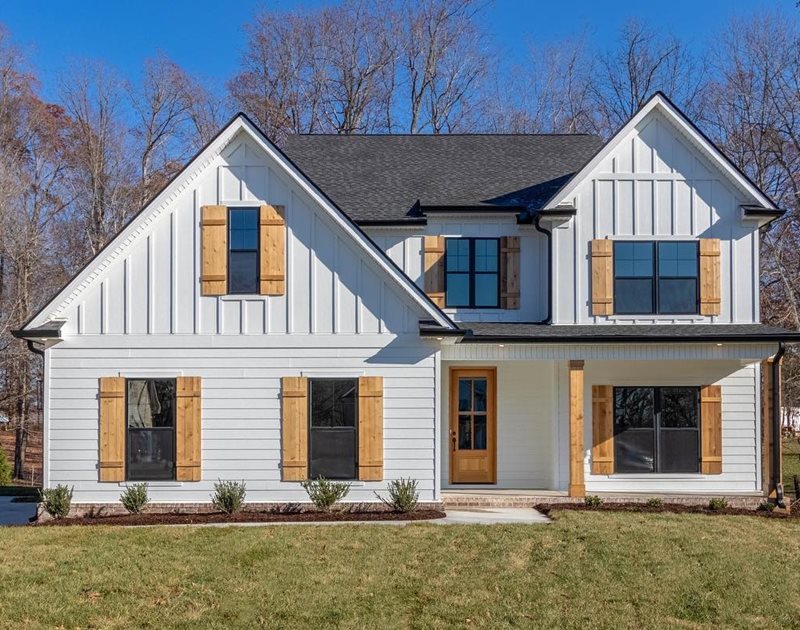Siding plays a crucial role in protecting and enhancing the aesthetics of a building. It is an exterior covering that is installed on the walls of a structure. While its primary purpose is to provide protection against the elements, siding also has a significant impact on the overall appearance of a building. In this article, we will explore the question: Is siding a cosmetic?
Introduction
Siding is commonly associated with the aesthetics of a building, but its function goes beyond cosmetic appeal. It serves as a protective layer against harsh weather conditions, insects, and other potential hazards. While its primary goal is to safeguard the structure, siding can also greatly enhance the curb appeal and value of a property.
The Purpose of Siding
The primary purpose of siding is to shield a building from external elements. It acts as a barrier, preventing moisture from seeping into the walls and causing damage such as rot, mold, or mildew. Additionally, siding helps to insulate the interior, reducing energy loss and improving comfort levels. It also contributes to sound insulation, minimizing exterior noise pollution.
Enhancing Curb Appeal
Siding plays a vital role in enhancing the curb appeal of a property. With a wide range of materials, colors, and textures available, homeowners have the opportunity to choose a siding option that complements the architectural style of their home. Whether it’s a traditional clapboard, modern vinyl, or rustic stone veneer, the right siding can significantly improve the overall appearance of a building.

Aesthetic Options
When it comes to aesthetics, siding offers a plethora of options. Different materials, including vinyl, wood, fiber cement, and metal, provide varying textures and finishes. Homeowners can select from an array of colors, allowing them to create a unique look for their property. Siding can mimic the appearance of other materials like wood or brick, providing a cost-effective alternative without sacrificing visual appeal.
Durability and Protection
While siding enhances the visual appeal of a building, it is also designed to withstand the test of time. Modern siding materials are engineered for durability and longevity. They are resistant to rot, warping, and fading, ensuring that the exterior of a structure remains intact and vibrant for years to come. This protection extends the lifespan of the building, reducing the need for frequent repairs or replacements.
Energy Efficiency
In addition to protection and aesthetics, siding contributes to energy efficiency. Insulated siding options, such as those with built-in foam backing, provide an extra layer of insulation, reducing heat transfer between the interior and exterior of the building. This insulation helps regulate indoor temperatures, reducing the workload on heating and cooling systems. As a result, homeowners can enjoy energy savings and a reduced carbon footprint.
Maintenance and Longevity
One advantage of siding is its low maintenance requirements. Unlike materials like wood that require regular painting and sealing, most siding options are relatively easy to maintain. Cleaning with water and mild detergent is often sufficient to keep the siding looking its best. Additionally, the siding’s durability ensures that it maintains its visual appeal for an extended period, reducing the need for frequent repairs or replacements.
Return on Investment
Investing in quality siding can yield a significant return on investment. Not only does it enhance the curb appeal and value of a property, but it also contributes to energy efficiency, reducing long-term operating costs. When it comes time to sell the property, potential buyers will be attracted to a well-maintained exterior with high-quality siding. This appeal can result in a higher resale value and a quicker sale.

Environmental Considerations
Sustainability and environmental impact are important considerations in modern construction. Many siding materials are now manufactured using eco-friendly practices and recycled materials. Additionally, certain types of siding, such as fiber cement, have a longer lifespan than traditional materials, reducing the need for replacements and minimizing waste. Choosing environmentally friendly siding options can contribute to a greener and more sustainable future.
Conclusion
While siding undoubtedly enhances the visual appeal of a building, it is far from being solely a cosmetic feature. It serves a vital role in protecting the structure from the elements, improving energy efficiency, and providing long-lasting durability. Homeowners can enjoy a wide range of aesthetic options while benefiting from the added value and curb appeal that high-quality siding brings to their property.
FAQs
1. Can I install siding on my own, or do I need professional help? Installing siding can be a complex task, and it is recommended to seek professional assistance. Trained contractors have the knowledge and expertise to ensure proper installation and maximize the performance of the siding.
2. Which siding material offers the best durability? Fiber cement siding is known for its exceptional durability. It is resistant to rot, pests, and fire, making it a popular choice among homeowners looking for long-lasting siding options.
3. How often should I clean my siding? Regular cleaning of the siding is recommended to maintain its appearance. Depending on the location and environmental factors, cleaning every one to two years is generally sufficient. However, it is advisable to remove any stains or dirt promptly to prevent long-term damage.
4. Can siding help improve the insulation of my home? Yes, insulated siding can contribute to improved insulation in your home. It provides an extra layer of thermal protection, reducing energy loss and enhancing indoor comfort.
5. What is the average lifespan of siding? The lifespan of siding varies depending on the material. Vinyl siding typically lasts 20 to 30 years, while fiber cement can last up to 50 years or more with proper maintenance and care.

